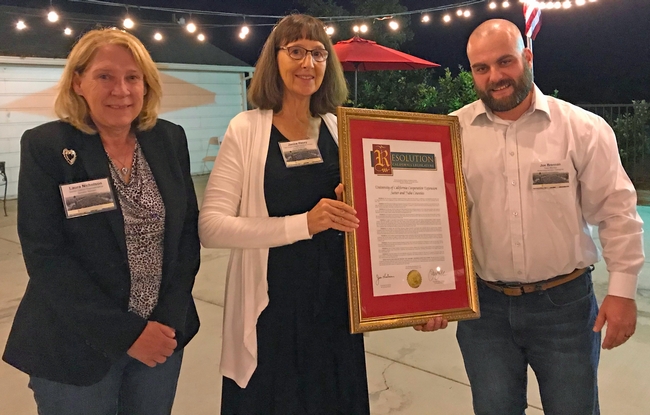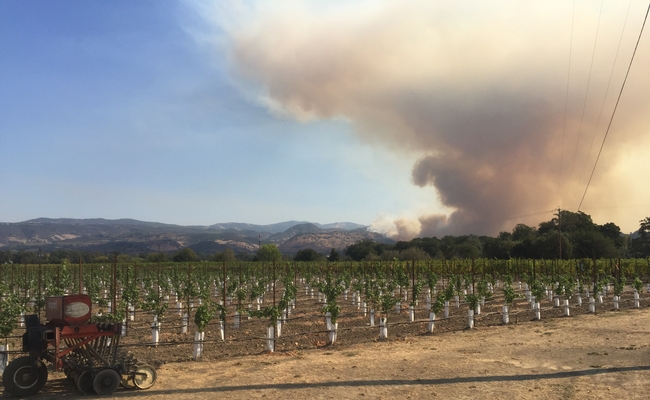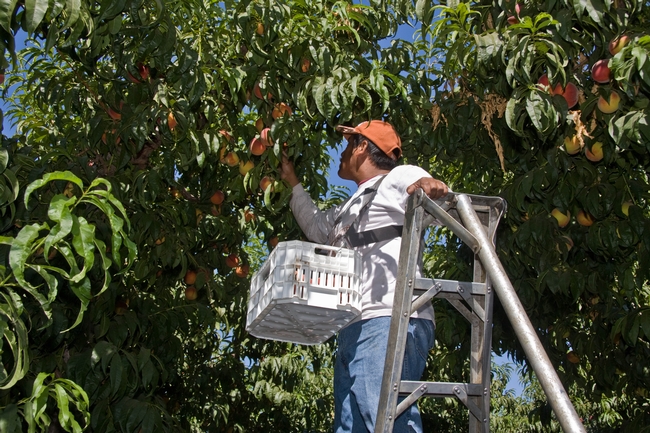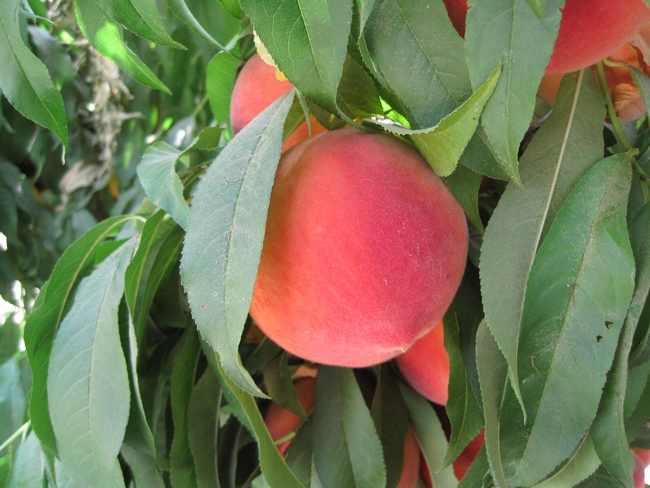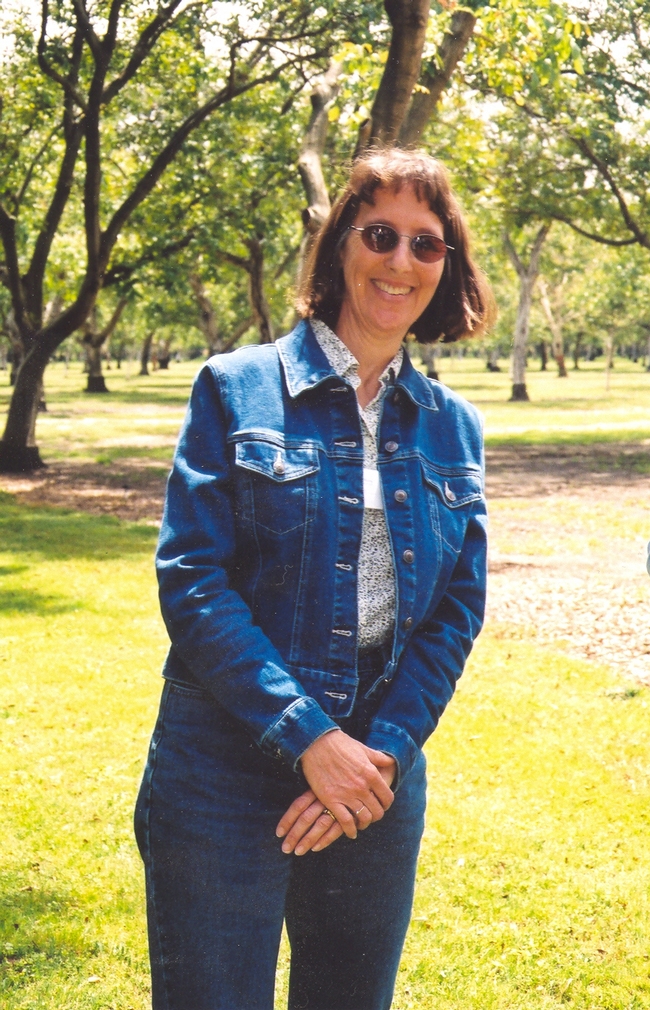Posts Tagged: Janine Hasey
UC Cooperative Extension in Sutter and Yuba counties celebrates 100 years
Sutter and Yuba counties' UC Cooperative Extension marked the centennial anniversary of the local offices this year, reported Chris Kaufman in the Appeal Democrat. Led by county director Janine Hasey, the now-merged UCCE office celebrated 100 years of continuous support to farmers, youth, families and communities in the area.
Sutter/Yuba UCCE's historical significance was amplified when Hasey discovered a cache of historical documents in the office. Jessica Hougen of the Sutter County Community Memorial Museum created a display highlighting the information, which debuted at the 100th anniversary event. The exhibit will be on display at the museum through mid-December.
With Hougen's assistance, the UCCE Sutter-Yuba staff wrote articles highlighting UCCE's contributions to the local agriculture industry for the counties' crop reports.
The 2017 Yuba County Crop Report outlines the history of UCCE in the county, starting with the hiring of William Harrison as Yuba County's first UCCE farm advisor on July 1, 1918, then listing a timeline of contributions that resulted in economic benefit to farmers and reduced impacts on the environment.
The 2017 Sutter County Crop and Livestock Report lists major contributions of UCCE to the county over the past 100 years, with a sidebar focusing on rice.
“Our partnership goes back to our first farm advisors, who were housed in the same buildings with the ag commissioners in each county,” Hasey said.
The Appeal Democrat article included a sidebar focusing on the career of David Ramos, who in 1959 took his first job out of college as an extension assistant in the Sutter County UCCE office.
“When I was there, our office was downstairs from the post office in Yuba City and it's incredible to see how it's changed,” said Ramos, 85, of Davis. “What's so incredible is the number one crop when I got there was cling peaches. It tickles me to see the transition because I've seen the prune and walnut industry develop since then and it gave me an incredible perspective on the dynamics of the change that's taken place.”
The reporter also highlighted the 4-H Youth Development program in his article with quotes from Nancy Perkins of Live Oaks, an active 4-H volunteer.
“My father and his siblings were in Franklin 4-H, and it was a way of life for them back in the 1930s,” she said. “My dad was part of 4-H, I was part of 4-H, my children were part of 4-H and my grandchildren are part of it.”
Preparing to evacuate during wildfire? These checklists can help
To help people prepare, CAL FIRE has a checklist for evacuation online at http://www.readyforwildfire.org/Evacuation-Steps. UC Agriculture and Natural Resources scientists contributed to the research behind the recommendations.
A one-page checklist online at http://disastersafety.org/wp-content/uploads/2016/07/IBHS-Wildfire-Last-Minute-Checklist.pdf, also based on research by UC ANR scientists, is available from the Insurance Institute for Business & Home Safety.
Napa County residents have been told to be prepared in case they need to leave.
“We have team members tending to their own homes and or family's needs, providing support in shelters, and being available for immediate clientele needs in any way they can,” said David Lewis, UC Cooperative Extension director in Napa and Marin counties. “We look forward to calling upon UC colleagues with more experience to support our communities in the long recovery period. For the immediate future, we will stay focused in our efforts to support evacuation and shelter efforts – personal safety and needs are priority one until the fires no longer pose a threat.”
The main thing to remember when preparing to evacuate is to protect your life first.
“Don't die trying to prepare your house before you leave,” said Yana Valachovic, UC Cooperative Extension director and forest advisor in Humboldt and Del Norte counties. “Monitor the situation, watch the wind directions, and listen to all emergency personnel.”
To receive timely updates on fire conditions, Brian Oatman, UC ANR Risk & Safety Services director, uses Nixle. “While some communication methods may not work due to outages, the more sources we have, the better the chance that the message gets through,” Oatman said. To sign up for text alerts, visit http://www.nixle.com or text your zipcode to 888-777 to opt-in.
“We have coordinated with CropMobster to create a resource list at https://sfbay.cropmobster.com/bay-area-fire-resources where anyone can post any needs or offer help of any kind,” said Stephanie Larson, UC Cooperative Extension director in Sonoma County. “UCCE Sonoma has also created a Disaster Recovery for Agriculture Operations at http://cesonoma.ucanr.edu/Disaster_Resources for homeowners and managers of rangelands. UCCE is working closely with Sonoma County to provide UC ANR resources to assist with the recovery of our community that has been devastated by this fire.”
In Yuba County, the Cascade fire is 45 percent contained as of Oct. 12. “Evacuation orders are being lifted in parts of Yuba County,” said Janine Hasey, UC Cooperative Extension director for Sutter and Yuba counties. “Kate Wilkin, our new UC Cooperative Extension forestry, fire science and natural resources advisor in Sutter, Yuba, Butte and Nevada counties, has assembled resources for residents who are returning to their homes at http://cesutter.ucanr.edu/Fire_Information. We will be updating the website with more recovery information in the coming days.”
Late-harvest processing peaches produce more profit, new UC studies show
Tree fruit growers can receive premiums for delivering certain extra-early varieties of peaches, but peach farmers may net roughly $800 more per acre from late-harvest processing peaches than extra-early harvest varieties, according to new cost studies released by the UC ANR Agricultural Issues Center and UC Cooperative Extension.
To help farmers make decisions on which peach varieties to plant, UC researchers present sample costs to produce extra-early harvested cling and freestone peaches and late harvested cling and freestone peaches for processing in the Sacramento and San Joaquin Valley in these studies.
Although processors pay more for extra-early harvested peach varieties than late-harvest peaches, the researchers found that yields are higher for late-harvest varieties while costs for hand thinning the fruit are lower.
“Peaches harvested early in the season have less time to grow compared to peaches that get to hang on the tree another month or more,” explained Roger Duncan, UC Cooperative Extension advisor in Stanislaus County, who coauthored the studies. “Therefore, more fruit has to be removed so the remaining fruit can size. That means it costs you more to produce less.”
The analyses are based upon hypothetical well-managed farming operations using practices common to the region. The costs, materials and practices shown in these studies will not apply to all farms. Growers, UC ANR Cooperative Extension farm advisors and other agricultural associates provided input and reviewed the methods and findings of the study.
Both studies assume a 100-acre farmer-owned operation with 40 acres of cling peaches. The remaining acreage for both hypothetical farms is planted in other mature tree crops. The estimated economic life of the extra-early harvested cling peach orchard and the late harvested cling peach orchard is 18 years.
Some of the major differences between the two studies are return price, yield and fruit thinning cost. The extra-early harvested varieties have a price of $545 per ton, a yield of 17 tons per acre, and a thinning cost of $1,445 per acre. The late harvested varieties have a price of $490 per ton, a yield of 20 tons per acre, and a thinning cost of $1,177 per acre.
Asked if a small farm could save on fruit thinning expenses by doing it themselves, Duncan replied, “I guess it would be possible for a small family operation to do the thinning themselves, but not likely. It can take 20 to 40 minutes to thin a single tree. If there are 151 trees per acre, you can see that it would take one skilled person over a week to thin one acre.”
The authors describe the assumptions used to identify current costs for production material inputs, cash and non-cash overhead. Ranging analysis tables show net profits over a range of prices and yields. Other tables show the monthly cash costs, the costs and returns per acre, hourly equipment costs, the whole farm annual equipment, investment and business overhead costs and the operations with equipment and materials.
Free copies of “Sample Costs to Produce Processing Peaches, Cling and Freestone Extra-early Harvested Varieties, in the Sacramento and San Joaquin Valley – 2017” and “Sample Costs to Establish and Produce Processing Peaches, Cling and Freestone Late Harvested Varieties, in the Sacramento and San Joaquin Valley – 2017” are available on the UC Davis Department of Agricultural and Resource Economics website at https://coststudies.ucdavis.edu. Sample cost-of-production studies for many other commodities are also available.
The cost study program is funded by the UC Agricultural Issues Center and UC Cooperative Extension, both part of the UC Division of Agriculture and Natural Resources, and the UC Davis Department of Agricultural and Resource Economics.
For additional information or an explanation of the calculations used in the studies, contact Jeremy Murdock at the Agricultural Issues Center, at (530) 752-4651, Janine Hasey, UC Cooperative Extension advisor for Sutter/Yuba counties, at (530) 822-7515, or Duncan at (209) 525-6800.
Kiwifruit industry is making a comeback in California
Kiwifruit, the 67th most-valuable crop in California, had its heyday in the 70s and 80s, before production slowed somewhat, reported Reed Fujii in the Stockton Record. However, UC Cooperative Extension advisor Janine Hasey, says it appears to be growing in popularity once again.
All of U.S. kiwifruit is grown in California. Hasey told the reporter that most kiwifruit come from Sutter, Yuba and Butte counties, as well as the southern San Joaquin Valley. Strong market demand and prices have prompted at least one major grower to expand.
"They actually plan to plant 800 acres in Yuba County, which is a huge increase," Hasey said.
Kiwis are native to China, but are commonly associated with New Zealand. Called the Chinese gooseberry, they were renamed "kiwifruit" - after flightless birds native to New Zealand - for the export market in the 1950s. Kiwifruit vines are frost sensitive and require plenty of heat in the summer. Of the 27 most commonly eaten fruits, kiwis are the fourth most nutrient dense, following papayas, mangos and oranges, according to the Network for a Healthy California's Harvest of the Month.
Hasey said consumers are drawn to the fruit's sweet-tart taste and nutritional value.
“They're really packed with potassium and vitamins and antioxidants, and a lot of people like them,” she said.
Thirty-year farm advisor gets her day in the sun
Hasey, a plant pathologist by training, conducts research and works with farmers on a wide variety of crops, plant systems and cultural methods in Sutter and Yuba counties. She called the results of the walnut pruning research "a real paradigm shift."
Hasey and Bruce Lampinen, UC Cooperative Extension specialist in the Department of Plant Sciences at UC Davis, learned that trees that have been trimmed sparingly or not at all produced a bigger yield than trees that were pruned more aggressively.
"We've had several growers adopt it," Hasey said. "We always caution growers that whenever we have something new, to do it on smaller acreages first to see how it works. But there are several growers who are adopting it now because it's working so well. We do have fairly long-term data."

